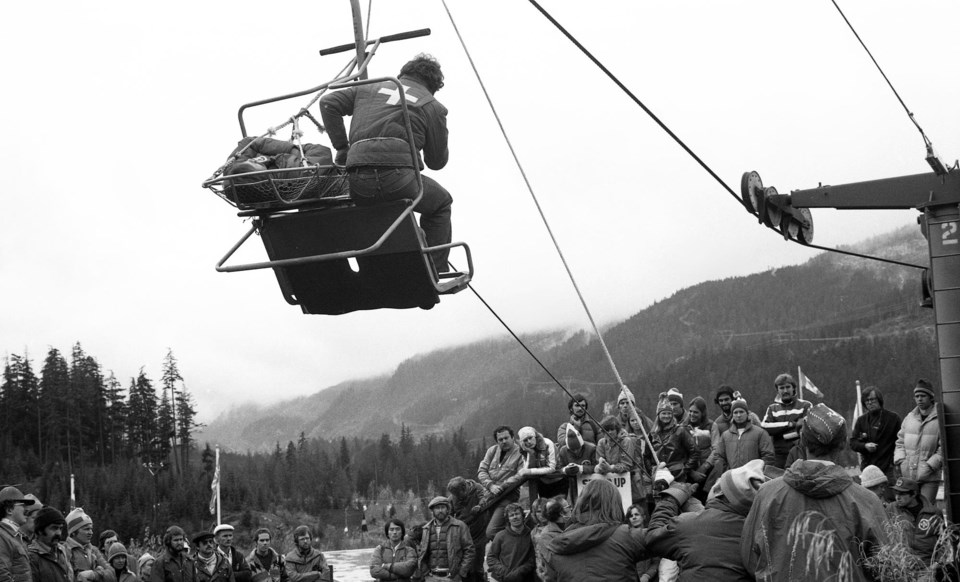We all know that ski patrol is vital to a safe and functioning ski resort. The first people on the mountain and the last to leave, ski patrollers ensure the terrain is safe before anyone else can access the runs. They also regularly take risks to save lives. Originally run entirely by volunteers, First Aid Ski Patrol on Whistler started with 12 people in 1965, before construction of the lifts had even been completed. There were more than 80 active volunteers at its peak. With Whistler Mountain growing rapidly, professional ski patrollers were brought in, and First Aid Ski Patrol volunteers continued to support professional patrol until Blackcomb opened in 1980.
Tony Lyttle was the head of the First Aid Ski Patrol from 1965 to 1971. According to Lyttle, “In 1965, when the mountain opened, we were all staying in trailers along with the rest of the staff of Whistler. As Whistler got more and more paid staff, there was less and less room for the patrol to stay. So that’s when we eventually got moved to the floor of the cafeteria, and that wasn’t very good because they started cooking at about 3 a.m. or earlier. So people would never get any sleep.”
On top of sleeping in the cafeteria, everything that a patroller needed was self-funded, relying on donations, fundraising and the generosity of the patrollers themselves, including the construction of the patrol clubhouse. In 1972, there was a raffle to raise money for portable two-way radios which revolutionized ski patrol practices. Before this they used the “bump system,” where patrollers would rotate between skiing a lap and waiting at the top of a lift so someone could always be found in an emergency. It also meant waiting long periods out in the elements, and could be bitterly cold in the days before Gore-Tex.
Along with the volunteer patrollers, there was a rotation of 10 doctors who could administer pain relief and assist with diagnosis, sutures and dislocated shoulders. Flags were raised to get a doctor’s attention when additional medical support was required. There was no medical centre, only a small first-aid room. Without ambulances, people mostly went home injured or travelled to Squamish or Vancouver via private vehicle. There was a helicopter landing pad by the gravel parking lot, but only the most serious head or back injuries were flown out via helicopter for further treatment.
Washouts and rockslides regularly closed the road to Whistler. Lyttle remembers once loading dozens of injured skiers onto the train to Vancouver on Sunday night after the road was closed all weekend. “There were people loaded in that train on every seat, on the floor, down the aisles, all their luggage was piled high in the racks and then we had two freight-type cabins where we piled all the patients,” he said.
“All the stretchers were one on top of each other on racks. It was unbelievable and people were being sick and we were trying to give hypodermic needles, painkillers in the semi-dark with flashlights. It was like a movie. Then when we arrived in Vancouver, every ambulance in the city was at the North Vancouver station with all these red lights flashing and police cars.”
Recognized as some of the most capable patrollers in North America while paid not a dime, volunteer First Aid Ski Patrol was responsible for risk management, marking runs, trail maintenance, lift evacuations, finding lost skiers and first aid, and they regularly had to help dig out the lifts after a big snow. However, as many fondly remember, the parties were legendary and the powder never got skied out!




